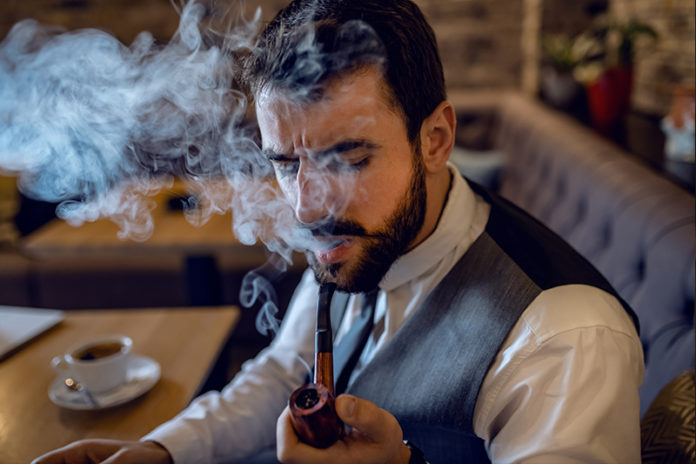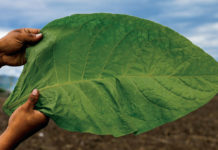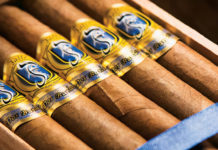Our new series “Ask the Tobacconist” is devoted to answering questions from our readers and from their customers as submitted by the retailer. It is not so much an advice column as a forum for discussing inquiries and situations that come up periodically. While some questions may appear to have obvious answers, not every tobacconist has had to address them at their store, and it can be beneficial to see how others have dealt with the issue in the past. It is hoped addressing these topics may spark further conversation on best practices for the retail tobacconist.
Cedric Williams, pipe department manager at Liberty Tobacco in San Diego, California, asks: My tongue is getting hot, and I’m not enjoying my pipe. What am I doing wrong? Also, I can’t keep my pipe lit. What should I do or not do?
Although these are two separate questions, they are interconnected, and a general explanation of pipe smoking technique addresses both.
A pipe that goes out frequently and “tongue bite” are both symptoms of the same cause: not knowing how to properly fill and light a pipe. It bears mentioning that a quality pipe and good, fresh pipe tobacco are essential for a positive experience. If your customer purchased a cheap, shellacked pipe from a pharmacy pegboard along with a pouch of
mediocre commercial tobacco, he won’t get a good smoke regardless of proper technique. Opinions can vary as to the best method for successful pipe smoking, but the basic elements are universal.
1) Fill the pipe in stages, dropping a small pinch of tobacco into the bowl, then tamping down firmly. Repeat this process until the bowl is filled. If the pipe is new and unsmoked, you may want to fill the pipe half or two-thirds full, gradually increasing the amount every few smokes. This will prevent a new pipe from overheating during the “break-in” period.
2) Light the surface of the tobacco with a match or a soft-flame pipe lighter, puffing while rotating the flame to light the entire surface evenly. (A torch lighter is not recommended
for lighting a pipe. It produces too much heat and is too intensely focused, which can cause a pipe to burn out.) Once lit, the tobacco will rise up and tend to go out. Tamp the tobacco back down with a pipe tool (an aluminum pipe nail or even a golf tee will also work) until it is firmly repacked, then repeat the lighting process. If you puff somewhat vigorously while circulating the flame around the bowl, you should have a well-lit pipe. It’s best to keep puffing, at a more relaxed pace, to keep it going. Removing the pipe from your mouth to admire it, or your dexterity at lighting it, will only serve to let the pipe go out. Once the tobacco is well-lit, you can slow down to taking the occasional puff, roughly the pace at which you breathe.
3) Usually the pipe will go out about halfway down as the tobacco expands and produces a layer of ash. At that point, gently remove the ash from the surface, re-tamp and relight the tobacco. You should then be able to smoke all the way to the bottom of the bowl, leaving nothing but ash.
The reason for this is to ensure a proper break-in, coating the bowl with a carbon lining from the bottom up. The more the carbon “cake” builds, the cooler the pipe will smoke. At some point the carbon will become too thick and will need to be trimmed back, or “reamed.” The ideal thickness of the carbon lining should be between the size of a dime and a nickel. An adjustable reamer or the rounded blade of a pipe knife is ideal for this function.
The key point here is thorough lighting and, most important, tamping before relighting. A loosely filled pipe will not stay lit, causing frequent relights, which can result in a tongue that feels like a straw doormat! Naturally, dry or too finely cut tobacco and/or a poor-quality pipe will also contribute to tongue bite, but having eliminated those variables, it’s
the technique that can either cause or eliminate a hot smoke.








